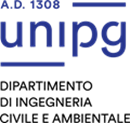Study-unit ENVIRONMENTAL HYDRAULICS
| Course name | Environmental engineering |
|---|---|
| Study-unit Code | A002606 |
| Curriculum | Comune a tutti i curricula |
| Lecturer | Marco Ferrante |
| Lecturers |
|
| Hours |
|
| CFU | 6 |
| Course Regulation | Coorte 2022 |
| Supplied | 2022/23 |
| Supplied other course regulation | |
| Learning activities | Caratterizzante |
| Area | Ingegneria per l'ambiente e territorio |
| Sector | ICAR/01 |
| Type of study-unit | Obbligatorio (Required) |
| Type of learning activities | Attività formativa monodisciplinare |
| Language of instruction | Italian. Lectures could be in English depending on what agreed with Italian and Erasmus students. |
| Contents | The equations of the hydraulics for some practical engineering problems (free surface and groundwater flow) are solved by means of analytical or numerical integration, with reference to the limits and the accuracy of the used models. |
| Reference texts | Lecture notes in English can be provided on request. |
| Educational objectives | The main objective of the course is to provide students with the bases needed to solve problems of interest for civil engineers, i.e. flood risk management and capture zone definition for well fields. |
| Prerequisites | Fundamentals of hydraulics and informatics. |
| Teaching methods | Lectures and tutorials using PMWIN (MODFLOW pre- and post-processor, http://www.simcore.com) and HEC-RAS (http://www.hec.usace.army.mil/software/hec-ras/) |
| Other information | For information on support services for students with disabilities and / or DSA visit http://www.unipg.it/disabilita-e-dsa. |
| Learning verification modality | Written exam and oral presentation of the results of a case study. |
| Extended program | Groundwater. Darcy and continuity equations for saturated flow. Analytical solution of the differential equations and pumping tests in confined aquifers. Parameters estimation with MODFLOW using field data. Capture zone delimitation: analytical solutions, particle tracking and use of MODPATH. Steady and unsteady flow in rivers.Momentum and continuity equations. de Saint Venant, simplified and extended equations. Numerical integration and implementation in HEC-RAS. Bridges and levees. |


